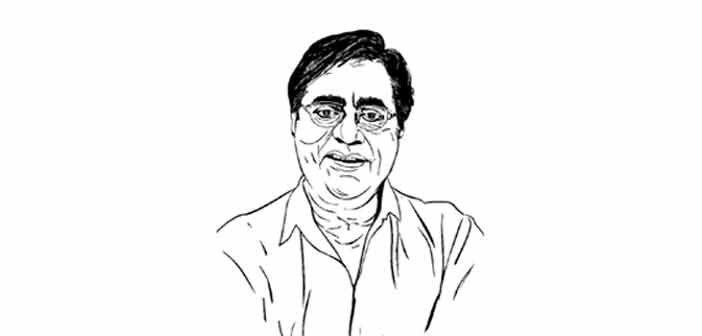The Unforgettable (1941-2011)
A little over three years ago, on the morning of 10 October 2011, music lovers across the world were in for a shock. Ghazal legend Jagjit Singh had passed away at the age of 70, after suffering a brain haemorrhage a couple of weeks earlier.
Suddenly, albums like The Unforgettables, A Milestone, The Latest and Mirza Ghalib, as well as film hits from Prem Geet, Arth and Saath Saath, came to mind. The songs Baat niklegi to phir, Woh kaagaz ki kashti, Duniya jisey kehte hain, Sadma tho hai mujhe bhi, Honto se choolon tum, Sarakhti jaaye rukh se naqaab, Tum itna jo muskura rahe ho, Hazaaron khwaishein aisi were among those played repeatedly.
An era was indeed over. Over the years, Jagjit had played a major role in spreading the reach of ghazal among the masses. Besides using simpler poetry that could be understood by a wider cross-section of listeners, he introduced musical instruments like the guitar, saxophone and keyboard to a genre which earlier relied mainly on tabla, harmonium and sarangi.
Thanks to his efforts, ghazals were also used in a major way in films in the 1980s. Though that wasn’t a new phenomenon – ghazals had been in the film music repertoire for years – artistes like Jagjit, Pankaj Udhas and Talat Aziz took the ghazal wave of the 1980s successfully to reach the more lyrically-inclined film music buff.
There have often been arguments that Jagjit’s earlier work, especially with wife Chitra Singh, were far superior in content and class – even this writer finds the initial albums more appealing. But that’s not to discount the songs he recorded as a solo artiste, once Chitra stopped singing following the death of their son Vivek in an accident in 1990.
Though Jagjit tended to sound repetitive at times and was also inclined towards rehashing his own older tunes, albums like Sajda with Lata Mangeshkar, Silsilay with Javed Akhtar and Marasim with Gulzar, were all prime examples of his class. The film gems kept coming too – Hoshwalon ko khabar kya’ (from Sarfarosh), Badi naazuk hai (from Joggers’ Park) and Jaagke kaati saari raina (from Leela) being among all-time favourites.
Strangely enough, Jagjit’s devotional recordings never became as popular as they deserved to be. Over the years, he recorded some outstanding songs like Varde varde varde, Tum karuna ke saagar ho, Hey Ram hey Ram, Baanke Bihari, Jai Ganesh Deva and Tum dhoondo mujhe Gopal. In fact, during his last seven or eight years, he concentrated more on bhajans. However, these albums weren’t marketed too well, and maybe because he was still identified only as a ghazal singer, exposure was relatively low, and so were sales.
Following Jagjit’s demise, many tribute concerts were held by singers Hariharan, Jaswinder Singh, Ghansham Vaswani, Ashok Khosla and Tauseef Akhtar. Sales of his earlier albums picked up for a few months.
There were some new releases too. T-Series came out with a two-CD compilation Alvida. For her part, Chitra Singh facilitated two albums of Jagjit’s previously-unreleased music. In 2012, Sony Music marketed The Master & His Magic and last year, Universal Music put out The Voice from Beyond, which included poet Shahryaar’s Zindagi jaisi tamanna thi and Dagh Dehlvi’s Rasm-eulfat seekh agaya koi.
Besides his unique singing style and sheer professionalism, many remember him for his spontaneous sense of humour, and his passion for horses and horseracing. In normal life, he would often dress up in jeans, Lacoste T-shirts, sports shoes and Rayban sunglasses, and he wasn’t fussy about wearing kurtas for photo shoots. “My face won’t change,” he would joke. Today, Jagjit’s music lives on. For an entire generation of ghazal fans, his songs will create magic forever.

